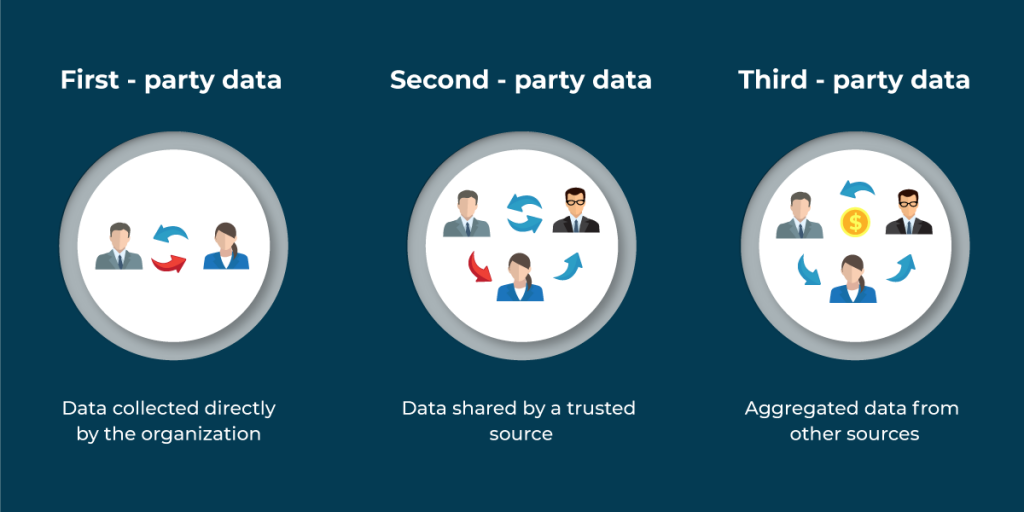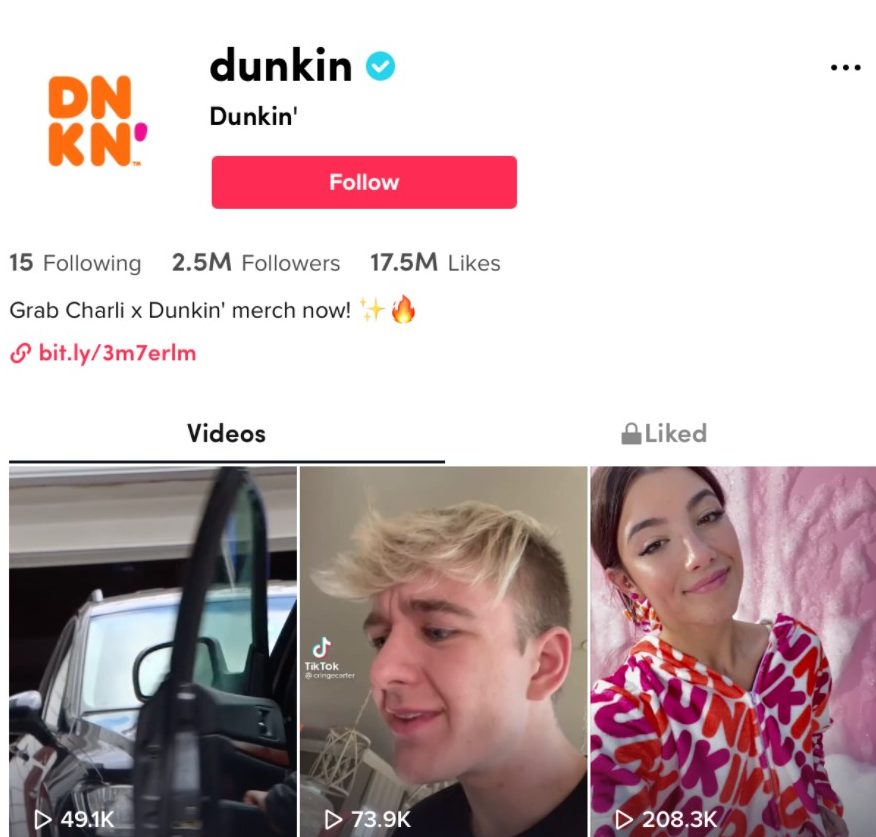Data privacy rules are changing and it’s going to have a huge impact on digital marketing. The impact is going to be so big that Facebook has been hosting webinars to prepare advertisers for the new changes.
As Vox explains, “Since 2012, apps developed for iOS have used an Identifier for Advertising (IDFA) to conduct tracking across different websites and apps. Apps usually collect this identifier so they can connect the information about the user gathered through the app to information about that user gathered elsewhere, like on the web, in order to better target ads.
Before 14.5, Apple mobile users were able to limit ad tracking through toggles deep in the software’s settings, but this newest update directly prompts users to approve and disapprove this tracking for every app.”
These are big changes to the ad space. The last time we saw changes this big, we’d say were when pixels were introduced. As retargeting became a massive part of digital marketing, brands realized how convenient it was to target hot leads who had already shopped on their website or searched for their products. Now, we’re seeing a reversal of these changes.
“App Tracking Transparency lets you control which apps are allowed to track your activity across other companies’ apps and websites for ads or sharing with data brokers,” says Apple.
As more data-related regulations are put in place (like online users in California being able to opt-out of cookies on websites), brands need to be prepared for a new marketing environment.
Be prepared to uphaul your marketing strategy.
First-Party Data vs. Third-Party Data
All data isn’t going away. The difference the iOS 14 update will make is specifically to third-party data. First-party data is still cool, it’s the third-party data that’s getting canceled.
First-party data is all of the data your business has on your customers from your website, marketing channels, and customers. If your company has sent out customer surveys, those responses are first-party data. First party-data also includes information about your website visitors (like their country location), the demographics of your social media audience, and how often a customer has purchased a specific product.
Third-party data is the same data shared with another platform, like Facebook, Instagram, Google, etc. Once Facebook knows that someone visited your website and looked at modern farmhouse-style coffee tables because of your pixel—they’ve tapped into third-party cookies. They’re now aggregating the data of hundreds of millions of users, even for actions and behaviors that never happened on their platform.
Kevin Cochrane, Senior Vice President of Product Marketing at Acquia explains,
“Third-party data could tell you if a customer viewed an item like a new blender on one site so you could then cross-target them across various other websites and platforms with ads for other blenders as well.”
Remember, first-party data is fine. You’re allowed to know what’s going on with your customers. Data like surveys, customer contact information, and purchase history are fine, as long as you’re the only one that has it.
Third-Party Data is Facing a Consumer Privacy Dilemma
Essentially, online advertising platforms (the third party in this story) are getting cut off from the data that helps them serve ads to the right users, based on demographics and behavior. This has big changes on social commerce.
If Facebook doesn’t know their user’s behavior across other platforms, they can’t serve them ads suited for them based on that behavior. They can only serve them ads suited for them based on the user’s behavior on Facebook. This means that marketing isn’t moving towards personalization—it’s moving away from it. Well, at least as far as the algorithms are concerned. Platforms like Facebook won’t be able to target users with the same bullseye they could previously which means relying heavily on paid ads to find your audience won’t work as well.
Like we said at the start of this article, there’s a reason Facebook has been preparing its advertisers for months now. They know marketing leadership is going to need to make major changes to their digital marketing strategy after iOS 14 reaches users. While they’re trying their best to help brands, even they don’t have all of the answers.
What does a world of first-party data look like?
How Brands Can Adapt to Data Privacy Changes
As third-party cookies and data lose their ability to track some users, brands will have to adapt to the changing tides. As a marketer, you’re used to this. You adapted when the Facebook pixel was released and you can adapt again (and again and again as new technology and regulations come into play).
Here are 3 ways to adapt to the newest data privacy changes.
Add Available Tracking Data on Marketing Channels
This is an essential moment to make sure you have all of the analytical tools necessary to collect and track data across your specific marketing channels.
For example, this means firing up your Google Analytics pixel or hiring an agency to help you find new ways to track data across platforms. You’ll want to figure out how to own as much data on your customers as possible because this first-party data can be fed used in the ad platforms impacted by the iOS14 changes.
Even if a user has opted-out of being tracked across platforms by Facebook, first-party data of their email address can be uploaded to Facebook to be used to target them. The more first-party data you can collect, the more strategies open up to be used to take the place of the cross-platform strategy you were using prior.
Create Transparency Around How Data Will Be Used
App Tracking Transparency is Apple’s example of social listening. They heard their customers talking about their discomfort with apps and websites tracking their behavior and they listened. Brands can learn from Apple’s experience that customers want transparency around how their data will be used.
Every iOS14 user isn’t going to opt-out of ads. Some are happy to keep letting apps and websites track them, but understanding what’s going on behind-the-scenes means something. With data becoming more complex over the years, the average consumer isn’t going to understand why their Google search is showing up as an Instagram in-feed ad.
Explaining it to them can help them feel okay about it.
The same applies to the data you collect on your customers. From website pop-ups to check-out information, letting your customers know what they can expect from giving your brand this information creates the transparency we know they’re asking for.
Each time you ask leads or customers for data, let them know what you plan to do with it. Here’s an example of what that can look like:
“We’ll use your email address to send our weekly newsletter and opt you in to receive discounts and updates on our latest offers. We’ll never sell your information to a third-party.”
Build Trust with Leads and Customers
If users are too scared to have platforms tracking their data, it sends a clear signal to marketers as to what’s needed. More consumer trust. More than ever before.
How can marketers build consumer trust?
In 2020 we surveyed leading brands and found user-generated content was more trusted than brand-created content. Consumers didn’t want to see a perfectly posed brand photo—they wanted a testimonial from a real customer. We’ve seen the customer’s voice grow louder and louder as user-generated content continues to make its way front and center of public companies like Dunkin’.
As followers, fans, and customers engage with brands on social media (like eCommerce businesses), the number one thing these companies can focus on is building trust. That trust will turn into engagement, subscriptions, and conversions—which will be more important than ever in a limited third-party data world.
With user-generated content, brands can build trust and hyper-personalize the customer experience by:
- Resharing trustworthy testimonials
- Using UGC for social listening
- Resharing educational content
When done right, UGC can lead to driving more first-party data opportunities. We know that UGC (and employee-generated content) builds brand trust more than brand-created content. “We, as an industry, need to do a better job educating the consumer on the value exchange of our attention to ads with the content that we consume,” explains Sana Remekie in CMS Wire.
Can brands use UGC to build trust around how they handle their users’ data?
Sana continues, “With increased awareness of consumer privacy, brands who succeed in the post cookie and tracking world will be those that gain the trust of their customers by providing complete transparency and control over what personal information they provide, how it is used, and with whom it is shared.”
UGC can play a part in showing fans, audiences, and leads that a brand isn’t going to mess with its data privacy. It can act as the new road that paves a new path using primarily first-party data. The faster that trust can be built, the more likely followers and fans will participate in contests and sweepstakes. These are huge opportunities for collecting first-party data that can be used in marketing campaigns.
Third-party data and cookie changes are coming, yet let’s make sure that we’re not just talking doom and gloom. For now, consumer privacy is an option. iOS users can choose to opt-in or out of having platforms track their data on other platforms or if they don’t want a website tracking their cookies.
This doesn’t mean every user is going to opt-out.
But, it’s important to be prepared for these changes. With user-generated content showing continuous strong consumer sentiment, we’ll continue watching as leading brands use UGC to build consumer loyalty and create a positive experience for their audience, leads, and customers (despite data privacy changes).
We cover marketing strategies like these in our weekly Future of Marketing emails. Subscribe here to join the 20,000 marketers learning what’s working in marketing today – and how to prepare for tomorrow.







